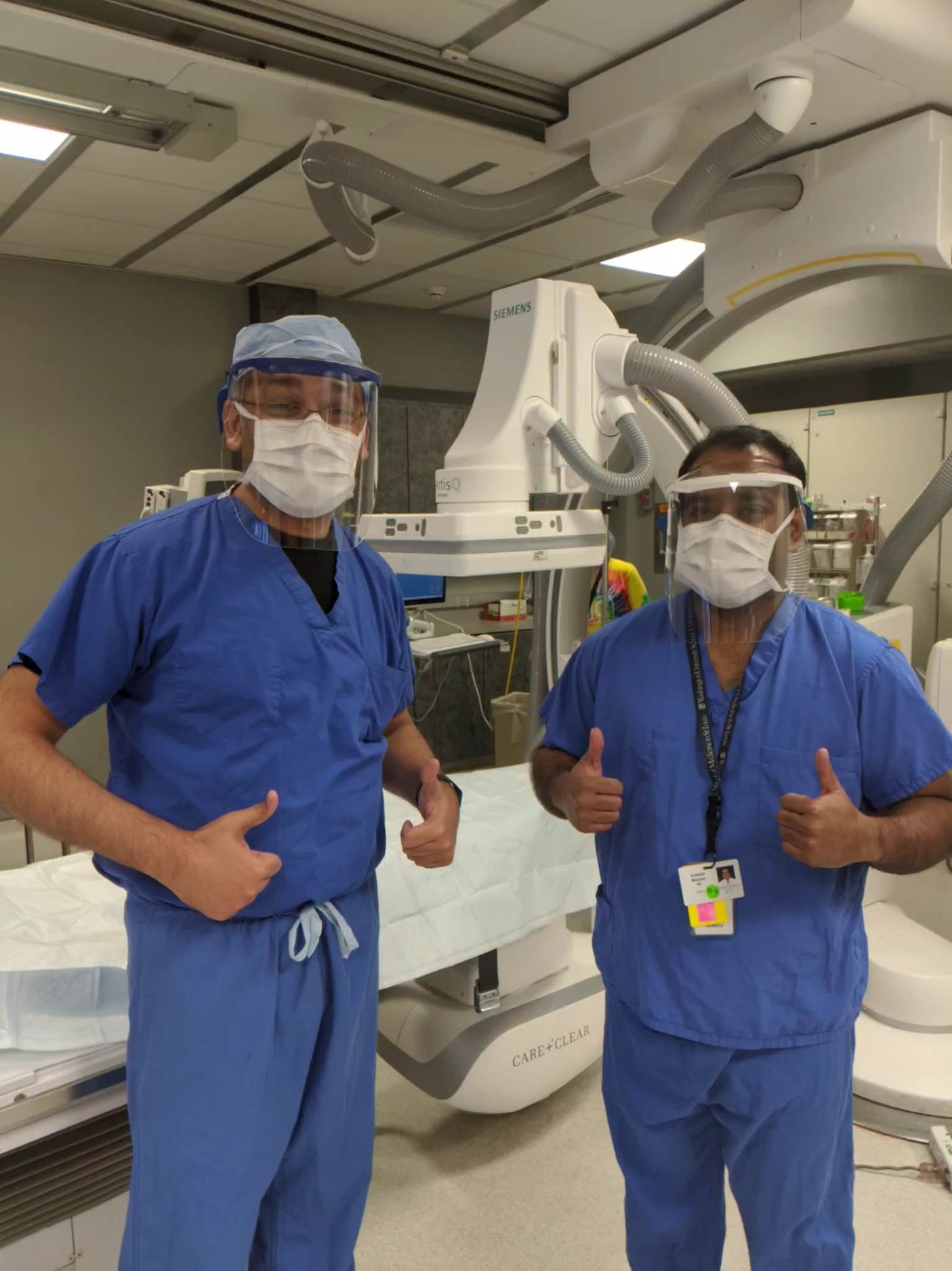McKelvey Engineering staff creating face shields for health care workers
McKelvey Engineering staff are pitching in to create personal protective equipment for health care workers in the COVID-19 pandemic
To help meet the increasing need for personal protective equipment (PPE) for health care workers on the front lines of the coronavirus pandemic, staff at McKelvey School of Engineering at Washington University in St. Louis are making use of the state-of-the-art facilities in the Spartan Light Metals Makerspace to create face shields for those treating patients at BJC HealthCare.
As part of the COVID-19 WashU Maker Task Force, Ruth Okamoto, maker space director and teaching professor in mechanical engineering & materials science, and Charlotte Guertler, staff research associate and makerspace associate director, completed the first production run of 100 prototype face shields March 28 and 29 and shared them with physicians at the Washington University School of Medicine and BJC Health Care for evaluation and testing. Now, they will be making 300 more face shields incorporating this feedback and will share their optimized design with others.
These face shields can be used immediately to protect health care workers in emergency situations when standard-issue face shields are not available.
The task force is working to supplement BJC Supply Chain's efforts to ensure that clinicians and patients have the necessary medical supplies for the expected COVID-19 surge. Its executive team includes Tom Maddox, MD, professor of medicine at Washington University School of Medicine and executive director of the BJC/WUSM Innovation Lab; Ali Kosydor, director of the Innovation Lab; Aaron Bobick, dean and the James M. McKelvey Professor in McKelvey Engineering; Eric Leuthardt, MD, a neurosurgeon at the School of Medicine and an inventor; and Philip Bayly, chair of mechanical engineering & materials science in McKelvey Engineering.
The face shields Guertler and Okamoto produced cover the face from the forehead to below the throat, and are made with just four parts: two clear flexible plastic pieces that shield the face and forehead; a blue, 3D-printed band on which the plastic pieces attach; and a piece of stretchy resistance band that goes around the head to hold it in place.
"The top piece protects the top of the head, so when the health care worker bends over, they will not get droplets inside of the shield," said Guertler, who designed the prototype after evaluating several existing open-source designs. "The top piece fits right up against the forehead, and it's flexible so it can fit anyone. The shield wraps around and protects the face from the front and sides."

When designing the prototype, Guertler asked physicians at Washington University School of Medicine, including Vicky Fraser, MD, chief of the Department of Internal Medicine, and Kathleen Meacham, MD, PhD, assistant professor of anesthesiology in the Division of Pain Management, for their input on what type of shield they needed.
"The feedback we got from the doctors was there needed to be no way for the droplets to come in from all directions," Guertler said.
The face shield also needs to be able to be cleaned with disinfecting solutions so that it can be reused. Okamoto said they tested two different cleaning products on the shield with good results.
To make the first 100 face shields, Guertler and Okamoto used low-cost materials: $72 of clear plastic; $40 of PETG 3D printer filament and $30 in resistance bands that they cut up into strips. However, the biggest investment in the project was time: both Guertler and Okamoto each spent more than 20 hours in the makerspace over two days in production, which doesn't include the design and preparation beforehand and refinements afterward.
In addition, the production itself takes time. Each 3D-printed band takes about an hour to produce on one of the seven 3D printers in the maker space. The plastic pieces are laser cut, which goes quickly. However, the pair had to keep the parts and work surfaces clean between each step, which added extra time.
"We had to work out our process as we went," Okamoto said. "When we go back and make more, it will be a lot more efficient, but there are a lot of steps, and we still have to clean everything."
The task force also is working with a group called Face Shield Initiative STL. This group, based out of MADE STL, a community maker space, works with community makers who 3D print face-shield components.




